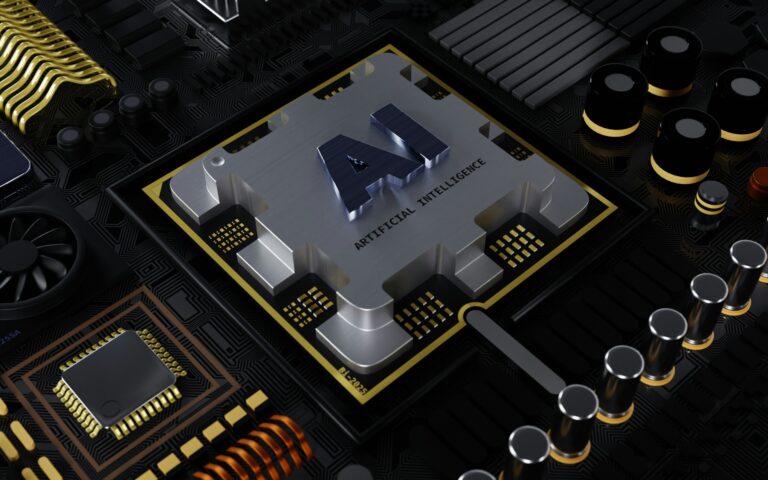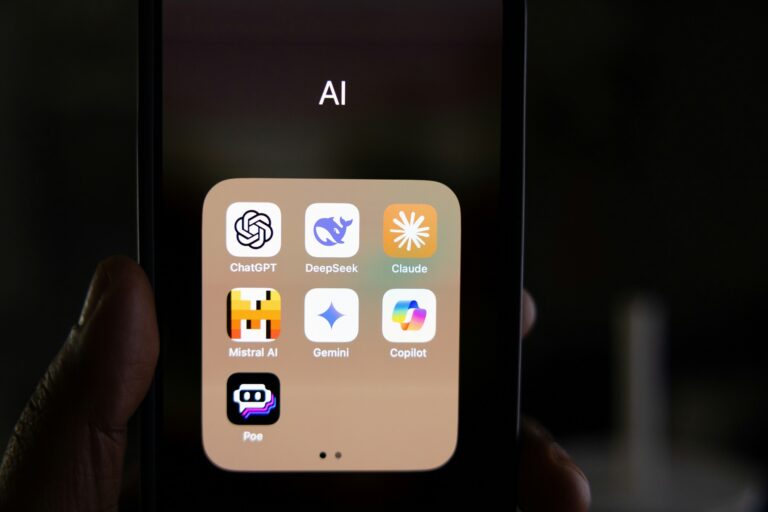AI in Industrial IoT: How It’s Revolutionizing Asset Management
Author: Zahra Hassan
AI is evolving every day, rapidly taking over the digital world and transforming the operations of many businesses across the globe. While it’s becoming apparent that AI is taking over many production processes, it’s hardly discussed how it’s taking precedence over revolutionizing asset management in various industries. And that’s what we are going to discuss today.
Know the Fundamentals
Let’s break down what AI, IoT and Asset Management are before diving deep into the main topic, as knowing the fundamentals will help us get a clear picture of what we are going to talk about.
Artificial Intelligence (AI): We all know what AI means, but if you are looking for a simple definition, we have it for you. 🙂 Imagine simulating human intelligence into machines, so they can think, learn, and perform tasks like humans while also predicting and solving problems beforehand. Well, that’s what we call artificial intelligence. Think about the chatbots we have today, and how they are increasingly becoming more like humans when it comes to interaction and solving whatever problems we are throwing at them.
Internet of Things (IoT): Internet of Things refers to a network of interconnected devices that communicate and share data with each other over the internet or other networks like bluetooth. They are equipped with sensors, software, and processors to collect and exchange data with other devices to perform or automate various tasks or functions. One of the best examples for this is CCTV cameras that can be operated remotely through a mobile app.
Asset Management: Asset management is the process of monitoring, organizing, and maintaining the assets of an organization to maximize their value to deliver services efficiently and effectively. It can range from machineries, vehicles to even buildings and data centers.
AI + IoT => Intelligent Apps

Now we have a fair idea on what AI and IoT means. Think about merging AI and IoT to streamline business operations and production processes in an organization, where IoT collects the data and lets AI analyze and interpret to take measured actionable steps. We all can see what a powerhouse it could become.
Now let’s put it into asset management, starting with monitoring the performance of machines. Let’s say we have sensors installed to collect real-time data of a machine’s activities, and the data is being automatically fed into AI to analyze and predict anomalies, so it can be fixed beforehand to minimize the damage and costs, and thereby significantly increasing the productivity and lifespan of the machine. Now let’s bundle this entire process into an app, where it gets better over time learning from its data and offering recommendations to make timely data-driven decisions. That’s what we call intelligent apps.
If you are interested in checking a real-world example of an intelligent app, you can check our recent project with Hyele Ltd. here: How We Enabled 100% Real-Time Water Infrastructure Monitoring for Hyele Ltd.
What’s more? Time to say good-bye to manual processes, periodic inspections and paper-based manuals. 🙂
Benefits of AI & IoT in Asset Management
Now let’s explore how integrating AI & IoT can be a game-changer in asset management:

- Improved Decision-Making: Since AI has the ability to analyze vast amounts of data shared by IoT in real-time, together, they can assist in analyzing data to identify patterns and anomalies that are nearly impossible for humans to identify. This would help companies to make informed decisions swiftly before it leads to a complete disaster.
- Cost Efficiency: With IoT’s accuracy in gathering data and AI’s predictive capabilities, it significantly reduces the risk of major errors in data, and thereby helping AI to make accurate predictions. This way, businesses can schedule maintenance only when it’s required, and take preventive measures to avoid unexpected breakdowns, which can reduce major costs and help companies to strategically optimize their budgets.
- Increased Productivity: AI & IoT automate most of the routine and complex tasks in asset management such as periodic inspections, analyzing data, compliance checks, etc. By automating these tasks, it frees up the valuable time of the team members, so they can focus more on strategic tasks, which result in increased productivity.
- Improved Risk Management: Since AI has the ability to analyze and interpret data from various sources in real-time, it can quickly identify potential threats, helping businesses to manage and mitigate risks more effectively.
- Scalability: Implementing AI & IoT in Asset Management takes away the burden of needing to increase the staffing of a business as it grows, as AI can handle the increasing work and adapt to changing business needs.
- Competitive Advantage: By considering all the above benefits, it is clear that by implementing AI and IoT together, it gives a competitive advantage for a business over its rivals by increasing the asset uptime, improving operational efficiency, and taking proper action ahead of time.
Challenges & Considerations: Why It Requires a Professional Approach
There’s no denying that AI & IoT have limitless potential in asset management. However, just like everything, they do come with a few challenges that need to be addressed. Let’s take a look at them.

- Data Privacy & Security: IoT devices connected with assets collect large amounts of data which is exposed to cyber security threats. To avoid information breach or unauthorized access, companies must prioritize data security by implementing industrial regulations, end-to-end encryption, and authentication measures.
- Integration with Legacy Systems: Integrating AI & IoT with existing legacy systems can be complex in asset management. To mitigate these issues, companies can use middleware or adaptable AI solutions that can seamlessly integrate with existing systems.
- Initial Investment: Implementing AI & IoT solutions usually have an initial high cost due to integrating sensors, developing software/apps, and other computing systems and training. This can be addressed by assessing the cost-benefit ratio or by starting small with pilot projects to test its effectiveness before full-scale implementation.
- Skill Gaps: One of the key challenges in implementing AI & IoT in asset management is the skill gap, as they need specialized skills to develop, manage, and integrate AI & IoT technologies effectively. The ideal solution is to partner with a specialized AI development team/agency who can bridge the gap and offer the expertise required to build the systems.
Future of AI in Asset Management
As AI continues to evolve, it will create new possibilities and tools to achieve optimum transformative results in asset management. As such, here are the top 3 future trends that’s going to significantly transform the asset management of a company:

- Quick Decisions with Edge Computing: Instead of just relying on cloud servers, companies are beginning to lean towards edge computing, as it allows AI algorithms to be directly deployed on IoT devices, so they can fast process data locally. For example, edge devices can process data from the sensors integrated in assets itself to detect any unusual patterns and take corrective measures immediately.
- AI-backed Autonomous Systems: The future of asset management will significantly see a rise in AI-backed systems that can fully take care of the entire processes with very little human intervention. The AI systems will be capable enough to analyze a situation and make decisions on their own by continuously optimizing and improving their performance through machine learning.
- Asset Management with Digital Twins: Imagine you have a virtual replica of your assets, which can be used to simulate different scenarios like asset failures or malfunctioning, and see how to mitigate these issues by testing new strategies and possible outcomes without disrupting the production operations. Well, that’s what we call digital twins, and we are certain it’s going to become one of the most popular future trends in AI technologies.
Conclusion
By now, it is clear that the integration of AI and IoT in asset management represents a transformative opportunity for all businesses. By implementing these technologies, businesses can achieve unimaginable levels of operational efficiency, asset reliability, competitive advantage and long-term operational success.
If you are ready to revolutionize your asset management by unlocking the full potential of AI and IoT, we are here to help you leverage that. Just book a free consultation with us to discuss your goals and challenges. Let’s reshape your company’s future together.
WBC Digital Solutions
Book a Consultation
Ready to take the next step? Schedule a consultation with our expert team.
Connect With Us
Follow us for insights and updates, or get in touch instantly!
Explore Related Topics
Other Articles

AI Agents vs. AI Workflows: What’s the Difference and Why It Matters
Are AI agents the next big leap, or just another layer on top of automation?
Read more →
Web App or Mobile App? How to Pick the Right One for Your Business
Looking to build an app? Learn the key features & differences, and how to decide what best fits your business…
Read more →
Why Pay for ChatGPT? Here Are the Top 5 Free AI Alternatives in 2025
ChatGPT’s Too Expensive? Here Are the Top 5 Free AI Alternatives for 2025:
Read more →